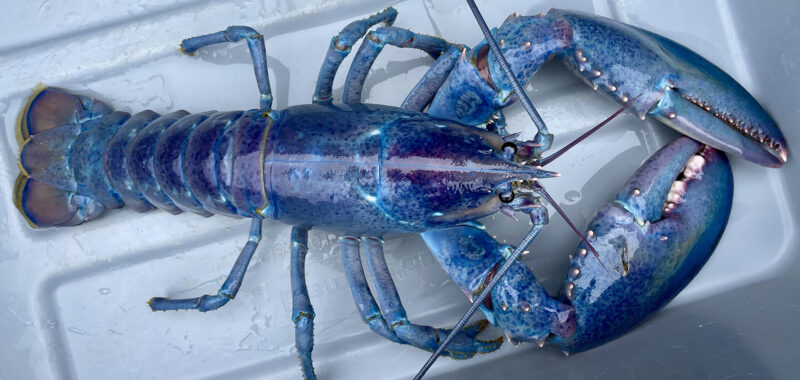A rare cotton candy lobster was the catch of the day recently off the coast of New Castle, New Hampshire. This candy-colored crustaceans was caught by a local lobsterman and donated to the Seacoast Science Center, a marine science education organization in Rye, New Hampshire’s Odiorne Point State Park. The wild color does not mean that it actually tastes sweet or like candy. It’s the result of a very rare genetic mutation.
“Lobsters commonly have multiple layers of a carotenoid pigment known as astaxanthin that show as layers of red, yellow, and blue,” Sam Rutka, an Aquarist II at Seacoast Science Center, tells Popular Science. “When all these layers are stacked they give the lobster a mottled blotchy pattern of oranges, reds, blues, pinks, purples, yellows, and browns that form the lobster’s camouflage.”

Sometimes, these pigments are either not expressed or are overexpressed. The results are more colorful lobsters. They appear in shades of blue (about 1 in 2 million), red (1 in 10 million), split-colored (1 in 50 million), albino (1 in 100 million), and cotton candy (1 in 100 million).
Importantly, “these numbers were calculated by the number of ways these genes tend to be expressed in nature, not by how many are found in the wild,” explains Rutka.
[Related: Why blue animals are so rare in nature.]
Blue itself is a very rare color in nature, partially because a true blue color or pigment doesn’t really exist in the wild. Organisms that appear blue absorb very small amounts of energy, while reflecting high-energy blue light. Since penetrating the molecules that are capable of absorbing this energy is a complex process, the color blue is less common than other colors in the natural world.
Less common does not mean completely absent, since plants and animals can perform various “tricks” to appear blue. Here are some cool blue flora and fauna and how they sport this unique appearance.
In May, a fisherman off the coast of England found a blue lobster in one of its traps. Rather than risk the lobster ending up on a dinner plate, the specimen was donated to a local aquarium, similar to what happened with New Hampshire’s cotton candy lobster. Blue lobsters have also been spotted in Marblehead, Massachusetts and France.
Blue or cotton candy lobsters aren’t any different from other lobsters, aside from their wild colors.
“These ‘colorful’ lobsters are naturally occurring variations and, as the current science shows, are completely unrelated to their environment or diet, and appear to be evenly distributed throughout their native ranges,” says Rutka.
[Related: The ‘smart’ animal club keeps getting bigger.]
However, some sources do say that diet can impact the intensity of the color in animals that already have the genetic expression for color variation, according to Rutka.
Seacoast Science Center is now home to lobsters of several different variations of orange, blue, calico, and cotton candy for public viewing and educational purposes.

